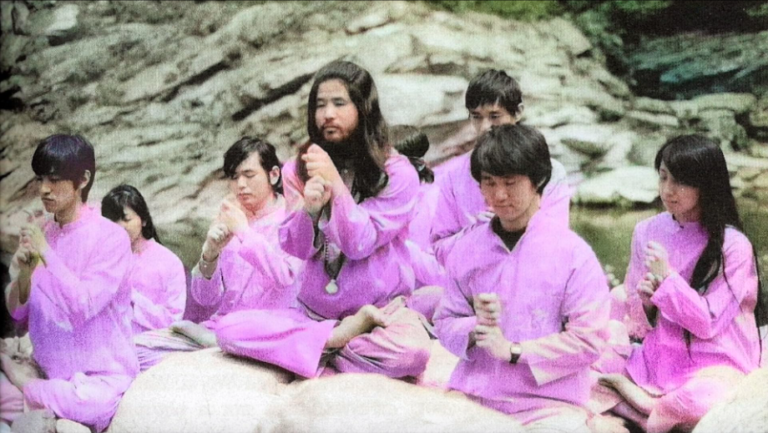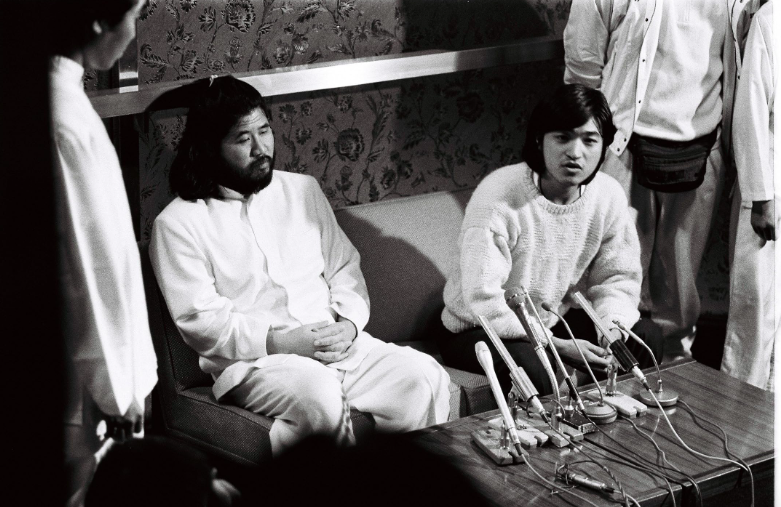
The documentary Aum: The Cult At The End Of The World, marks the directorial debuts of Ben Braun and Chiaki Yanagimoto. The film is based on the book The Cult at the End of the World by investigative reporter David E. Kaplan and journalist Andrew Marshall.
The picture, that had its world premiere at the 2023 Sundance Film Festival, intrepidly follows the doomsday cult Aum Shinrikyo, founded by Shoko Asahara in 1987. This organisation besides unsettling the lives of its followers and their families, was the one that carried out the deadly Tokyo subway sarin attack in 1995 and was found to have been responsible for the Matsumoto sarin attack the previous year. The peculiarity of these savage events, which caused 20 victims and the wounding-intoxication of over 6,500 people, was the use of a nerve gas — developed but never used by the Nazi regime — that is colourless, odourless, capable of passing through skin and clothing, rendering precautions such as gas masks ineffective. In 2018, after exhausting all appeals, Asahara and six followers on death row were executed as punishment for the these attacks and other crimes, including the murder of Tsutsumi Sakamoto, a member who tried to leave the cult in 1989.

The documentary sagaciously uses animation, in the anime style, and old footage, to alternate the talking heads interviews, to reconstruct the entire history of the Japanese cult and its atrocious deeds. It even goes to the extent of retracing its leader’s problematic childhood, as a potential traumatic experience that caused him to become a fanatic during his adulthood.
Public figures such as Ronald Reagan, or Donald Trump are featured in the film with footage of some of the public statements they made in the Nineties. A geopolitical analysis is also carried out in Aum: The Cult At The End Of The World, exploring the phenomena of the space war and the collapse of the Soviet Union, which led Asahara to develop relationships with Russia. In fact, thanks to Shoko Asahara’s skills of persuasion, within a few years, the group had more than ten thousand followers in Japan and another thirty thousand in Russia.
The growth of this association — whose name meant ‘Supreme Truth’ — was subtle before it became loud and overbearing. The movement began as a yoga and meditation class and steadily grew until it gained official status as a religious organisation. Initiation rituals are also exposed, from the imposition of sleep and food deprivation, to consumption of blood, and the use of hallucinogens, such as LSD. Aum further demanded from its followers to abandon anything related to the material world, from personal hygiene to possessions. In 1990, Asahara attempted to permeate into the world of politics, running for parliamentary office but was unable to be elected. According to some, this defeat lead Asahara to adopt harsher measures within his organisation to hold control.
Allegiance would eventually stem out of fear and worship, to the extent of indoctrinating followers with the concept of ‘poa,’ according to which it was acceptable to kill those at risk of bad karma to save them from hell. Thus, the extreme advancement of this organisation culminated in pure terrorism.

If one would think that ignorance would be the determining factor of the followers of Aum, the disturbing revelation is that the cult managed to recruit a variety of educated individuals, and develop a network of people in influential positions, that would include the Japanese Self-Defence Forces and the Tokyo Metropolitan Police. Thanks to generous donations, Asahara enriched the sect to such an extent that it was able to run schools, hospitals and a scientific research institute. His persona received such media attention from the Buddhist world, that he even met with the Dalai Lama several times.
Today the only surviving legacy of Aum, is Hikari no Wa or The Circle of Rainbow Light, founded by Fumihiro Joyu — former public relations manager of Aum Shinrikyo, who was sentenced to three years in prison and was released in 1999. This new organisation claims to focus primarily on spiritual wellbeing, yet considering the premises of its origins it is looked at with skepticism. Ben Braun and Chiaki Yanagimoto in their film also mention other Japanese sects, such as Soka Gakkai and The Institute for Research in Human Happiness, which is enlightening to understand how any religious groups with socially deviant beliefs and practices can become a threat to humanity.
Aum: The Cult At The End Of The World is a cinematic investigative oeuvre, that is dauntless in using a specific case as a parable for the perils hidden in any kind of cult.
Final Grade: A

